Wholesaler vs. Distributor vs. Supplier: What's The Difference?
Implementing an effective retail supply chain can be one of the most important steps to creating a successful ecommerce business and increasing net sales, and it starts with understanding how products get from the manufacturer to the customer.
But what is the retail supply chain? And what is the difference between a wholesaler, distributor and supplier? In this blog, we’ll help you understand these unique roles and how they contribute to the greater supply chain. With this understanding, you’ll be able to run your dropshipping business at peak efficiency and ensure your ecommerce site attracts customers and generates higher profits.
What is the retail supply chain?
The retail supply chain is the process of producing, shipping and selling products. It covers everything to do with stock management and is how retail businesses continue to function and meet the demands of their customers.
The supply chain helps business owners work with their suppliers to create the most cost-effective and efficient way to deliver products to the customer. It includes a network of people with various jobs, beginning with sourcing raw materials and ending with the customer.
Supply chains eliminate inefficiencies and reduce logistics costs. They also help streamline the production process to give customers the best experience, which can in turn lead to a higher customer return rate.
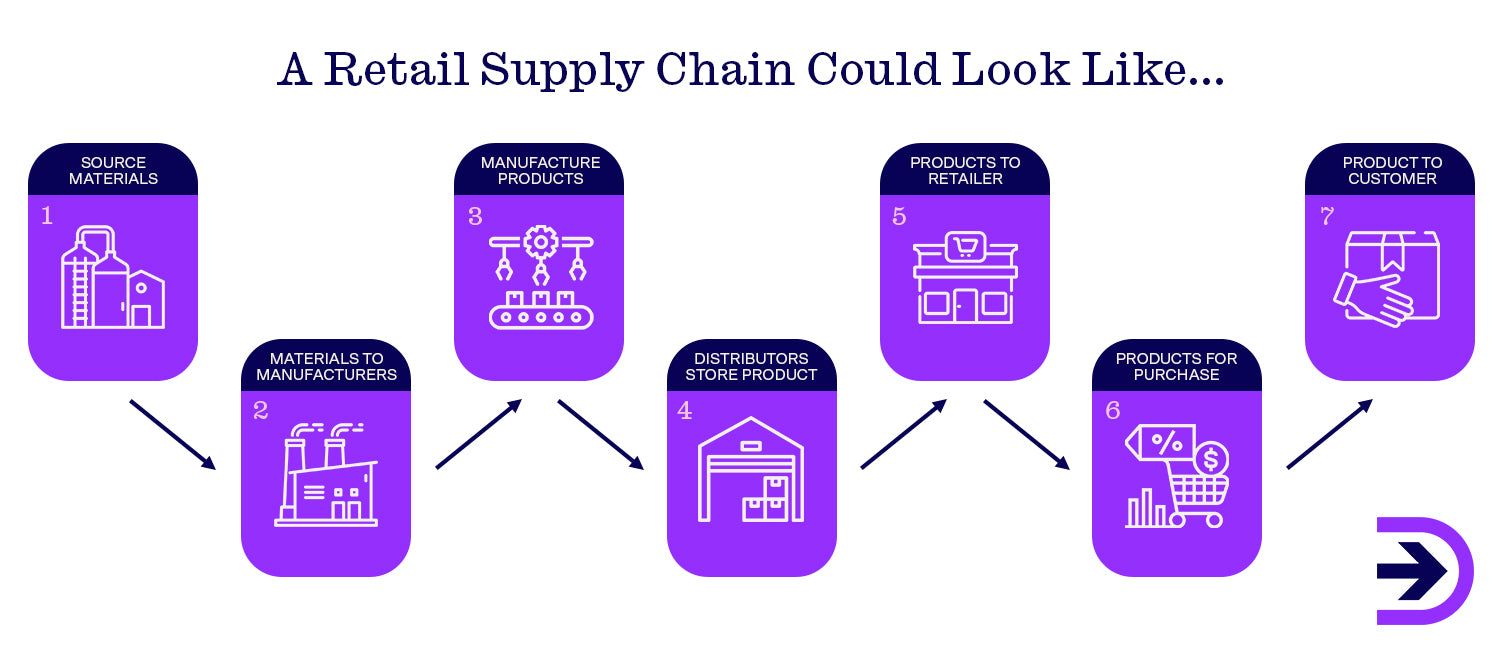
The steps to a traditional retail supply chain usually follow this path:
-
Raw materials are sourced.
-
Suppliers get these materials to manufacturers.
-
Manufacturers make products that go to distributors.
-
Distributors store products and transport them to wholesalers.
-
The wholesaler sells products to the retailer.
-
The retailer places items for sale for customers to purchase.
-
The customer receives their products.
The pandemic exposed the cracks in countless retail supply chains, with 72 per cent of businesses reporting that it had a negative impact on their supply process. With more people shopping online, most retail supply chains simply couldn’t keep up with the increased demand, causing severe delays in shipping times. Many businesses were forced to re-evaluate their supply chains, embracing new strategies such as local warehousing, working with multiple suppliers, and even dropshipping. The widespread adoption of AI into the supply chain has changed the landscape once again, helping businesses stay resilient in the face of change. Around 40 per cent of companies worldwide are already using AI in their daily operations, while a further 42 per cent are exploring adoption.
The benefits of retail supply chain management
Retail supply chain management is the ongoing development of the entire supply chain to limit errors and improve customer relations. Supply chain delays can lead businesses to lose up to 15 per cent of their annual revenue, not to mention significant reputation losses. It is essential that proper supply chain management is implemented to reduce these risks.
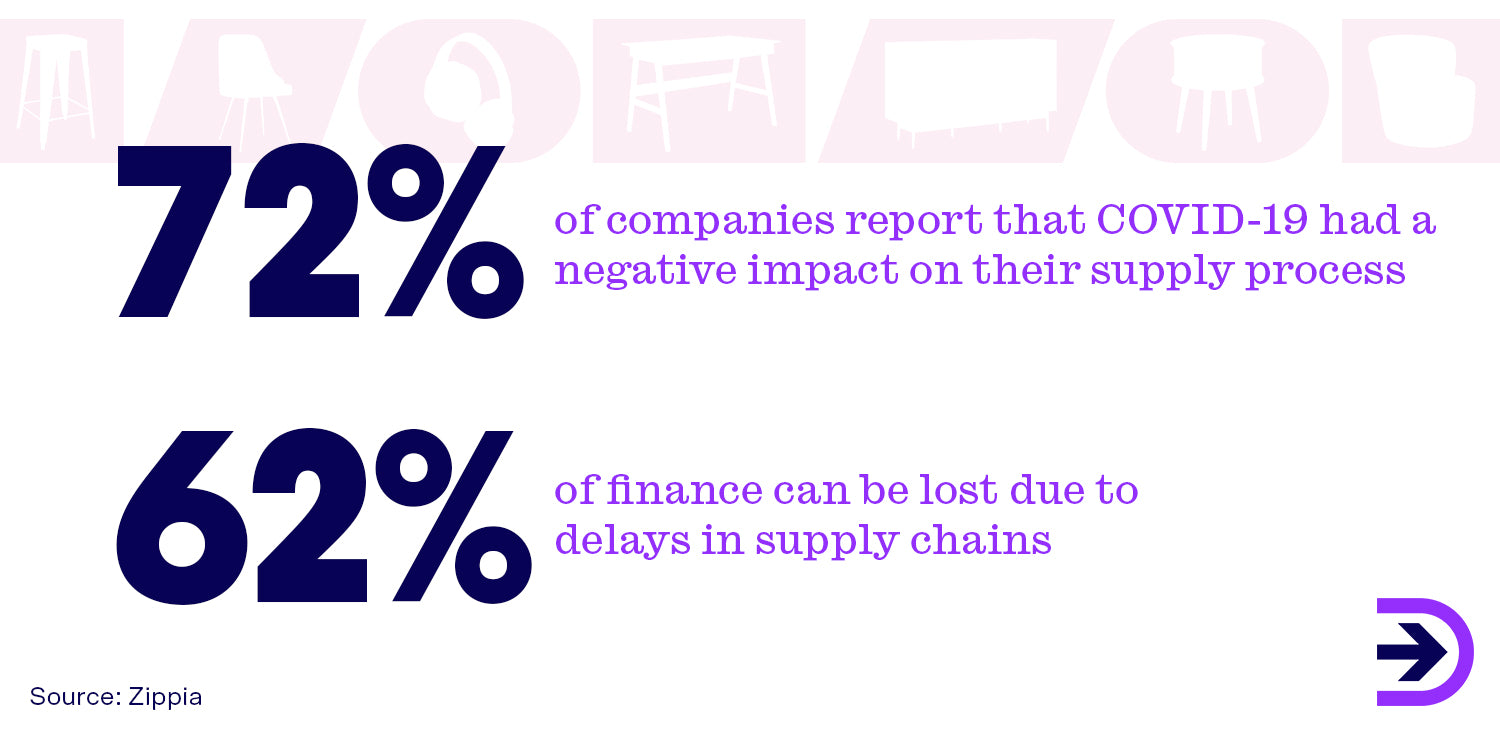
Along with saving money, there are plenty of other benefits to managing your supply chain.
Predict shopping behaviours
Retailers can use various marketing tools to predict customer shopping habits in order to prepare the supply chain for changes in stock demand.
An effective supply chain can work with advertisements running throughout the year. If there are specific items going on sale, retailers will need to be prepared to move more of those products and organise the supply chain with the timing of the promotions. Holidays like Christmas will also have a bigger demand on retailers, so supply chain management can use predictive analytics to decide how much stock to keep based on past customer behaviours.
With supply chain management, retailers can also figure out what customers want out of their shopping experience. For example, data analytics can offer a breakdown of customers choosing to pay for express shipping so their products arrive sooner versus customers willing to wait longer for free shipping options.
Faster shipping
Effective supply chain management can reduce logistics issues, like shipping errors, to improve customer satisfaction. Retailers can get to know each part of the supply chain and can accurately predict how long items will take to get manufactured, distributed, and eventually into the hands of the customer. This way, you are offering customers accurate and fast shipping times, and there will be minimal room for errors to occur. This is incredibly important in 2025, as 67.7 per cent of US shoppers value two-day shipping when shopping online, and 95 per cent of customers want their shipping issues resolved in transit.
Competitive edge
Supply chains allow companies to create an organised method to produce and deliver goods, and this can help to place them ahead of the competition. If word gets around that your shipping times are fast and stay consistent throughout the year, you will see exponential growth in customers and profits as people will be more likely to choose your products over competitors.
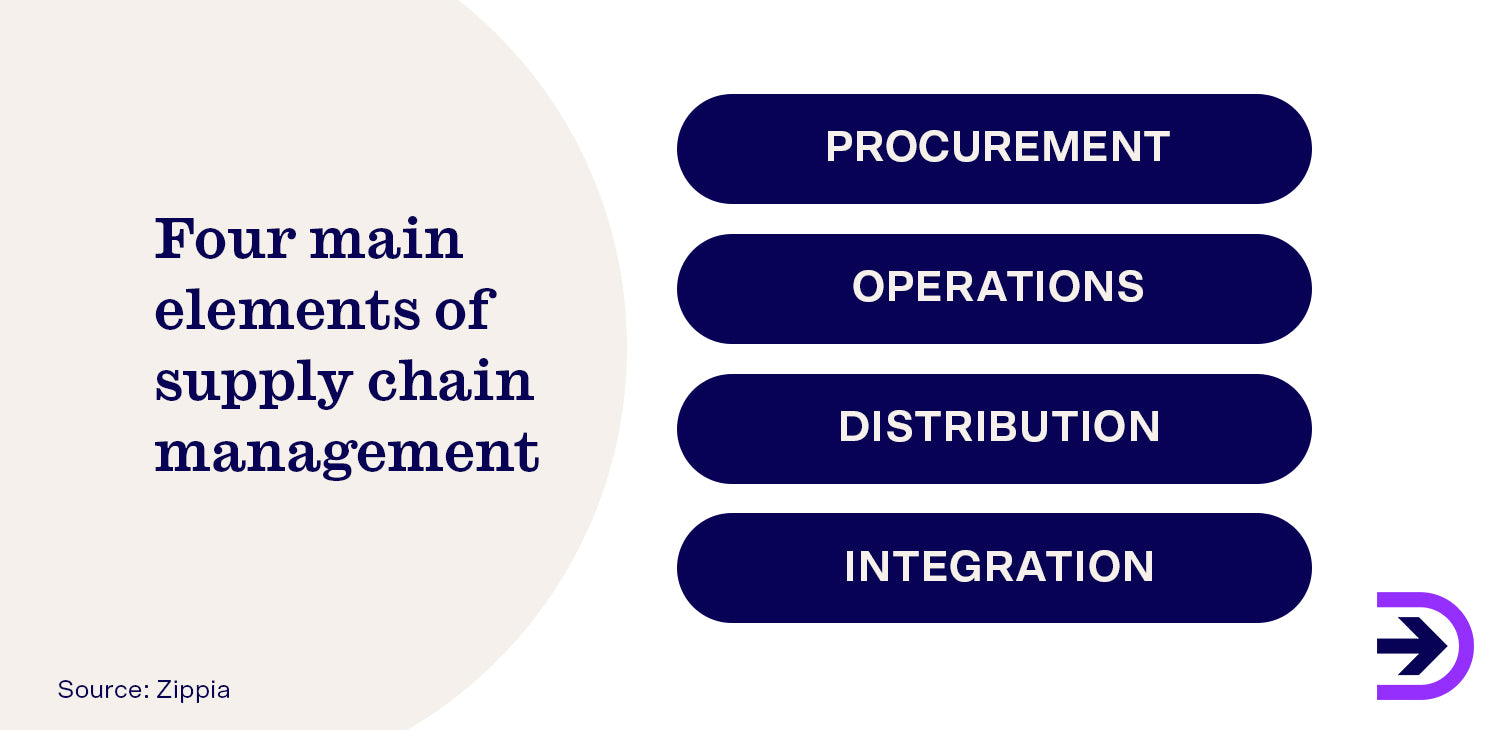
The retail supply chain in 2025
Experts predict that 2025 supply chains will be driven by increased logistics competition (pushed by the increased adoption of AI) and a focus on creating sustainable supply chains in the face of an energy crisis. Industries have also been hit by a driver shortage, leaving many suppliers in the lurch.
With AI automation turning into a necessity, now is a great time to digitise your supply chain and make it easier to exchange information between each of your providers to predict any issues that may arise.
Exploring different fulfillment options is another great way to stay on top of the changing market in 2025. This may mean working with multiple suppliers, or exploring alternative fulfilment models such as 3PL or dropshipping.
Having an effective supply chain will help to ensure the success of your ecommerce business by attracting customers with fast and convenient shipping times.
Where does your business fit within the retail supply chain?
Retailers sit towards the end of the supply chain and are the step that comes before the customers. Although the manufacturing is completed by the time products make their way to retailers, it is still important that they are aware of how each step works in order to implement appropriate management strategies along the way.
Conducting research and learning about the ecommerce market is important so retailers can respond to any issues in a timely manner to avoid any financial losses. Being able to recover quickly from any disruptions in the production process will help place you ahead of competitors – and your customers will notice.
It is also important for the retailer to cultivate relationships in the supply chain and choose who they want to work with to develop their business. It is crucial to not only choose suppliers offering the best prices, but also people who have experience in high-volume stock control. This will mean they are likely to have great internal logistics in place already and may be able to assist with supply chain management.
Setting communication standards and developing relationships with each link of the chain will be imperative to predict any problems that could occur down the line and ensure your success as an online business. If you give your time and energy into creating a successful supply chain, you will have no problems attracting a loyal customer base to help generate higher profits for your online business.
What is the difference between a wholesaler, a distributer and a supplier?
The three main parts of the supply chain include wholesalers, distributors and suppliers, but what roles do they each play?
Wholesalers
Wholesalers buy goods in large quantities from distributors in order to resell them to the retailer for a lower price. Unlike distributors, wholesalers have a business relationship with retailers who act as their customers. Wholesalers act as the sales representative for retailer demands, and their buying process involves purchasing products at cheaper prices to then resell at higher prices.
They also can work on either a two level or three level channel, meaning they work with multiple parties in order to reach more consumers.
Wholesalers exist to offer discounts to retailers when they purchase products in bulk quantities, and will often work in exclusive buying agreements with retailers to meet the demands of the final consumer.
Distributors
A distributor's job is to transport or distribute goods from the suppliers to wholesalers, and are in charge of packaging products. They also offer ongoing logistical and storage support. The distributor acts as a representative of the supplier in order to sell products for the best price to wholesalers or retailers, and is the first point of contact for suppliers.
Because a manufacturer's products cannot be sold directly to the final consumer, distribution channels are there to transport different product lines directly to wholesalers or retailers.
Distributors and wholesalers both work with a three level channel, however distributors work exclusively as a three level channel whereas wholesalers can also work with a two level channel.
Suppliers
People tend to get confused when it comes to suppliers, as technically each step of the supply chain ‘supplies’ products to the next step. In practical terms, the supplier provides the manufacturing company with raw materials needed to make products and then sells them directly to distributors.
Suppliers are actively involved in the production process to ensure the manufacturer's products are being made in a timely manner and that they are satisfying retailer demands and keeping up with different promotional activities throughout the year.
Suppliers work towards the beginning of the supply chain and are in charge of production, while distributors take care of transporting products and wholesalers sell products in bulk to retailers.
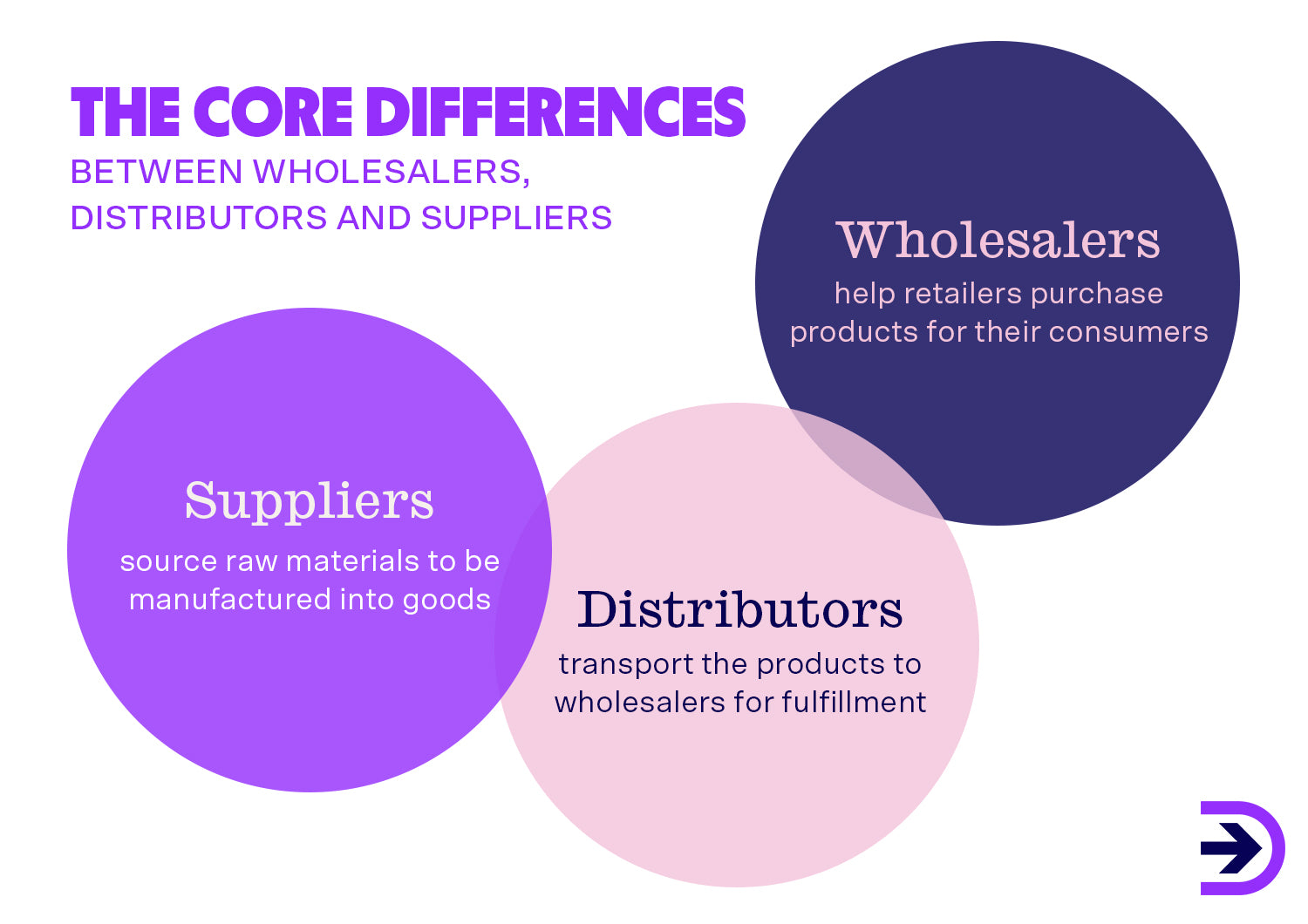
What are the core differences between wholesalers, distributors and suppliers?
Now that the definitions of the distribution channel have been outlined, we can point out the main differences between the three:
-
Wholesalers purchase goods in bulk to then resell in smaller units to retailers, so they only work with one or two entities. On the other hand, distributors offer transportation services to the entire supply chain, so their level works with only one customer whereas wholesalers work with different customer entities.
-
A wholesaler will also be able to work with multiple companies' products or competing retailers while also working with various manufacturers, while distributors will only work with one manufacturer or supplier and cannot distribute competing products.
-
Suppliers work to get products from the manufacturers to the wholesalers and distributors; neither step of the distribution channel can work without suppliers. While the distributor works as the intermediary entity, suppliers are in charge of one of the first steps of production.
-
Suppliers provide goods to both wholesalers and distributors that come directly from manufacturers, while distributors purchase products from suppliers to then sell to wholesalers.
Wholesaler vs Distributer vs Supplier
|
Supplier |
Distributor |
Wholesaler |
|
Sources raw materials |
Moves products from supplier to wholesaler or retailer |
Buys large amounts of products from distributor |
|
Gets products from the manufacturer |
Packages and stores large amounts of products |
Responds to the demand of retailers |
|
Sells those products to distributor |
Acts as a middle man between suppliers and wholesalers |
Sells bulk products to retailers |
|
In charge of ongoing production |
Can supply directly to customers with dropshipping methods |
Keeps products in warehouse for shorter periods compared to distributors |
Can your business model work with just one part of the supply chain?
It is becoming increasingly popular with online ecommerce businesses to cut down supply chains to just one or two key players, which can be an effective strategy to reduce risks and increase sales.
The dropshipping method involves a distribution channel that has suppliers working with retailers to sell directly to the customer, and specialises in executing passively received orders so you don't have to purchase and store bulk orders of goods. Products travel directly from the supplier’s warehouses to customers once an order is placed. It removes a lot of the risks and disruptions associated with traditional supply chains because retailers don’t have to worry about manufacturing or keeping tabs on their inventory.
When it comes to the retail supply chain, dropshipping has a much less complicated logistical method compared to traditional online retailers and brick-and-mortar stores. The products go directly from third party suppliers straight to the customer, so you skip out on the sourcing, manufacturing and distributing process, making it much simpler to prepare your supply chain for any market changes that may occur down the line.
Dropshipzone is an easy way to create a successful supply chain for your online business. We connect you with various third party suppliers in Australia to help you give your customers the best shopping experience possible.
Summary
The retail supply chain is the way in which products make their way to consumers, beginning with the manufacturing of goods and ending in the hands of the customer. Supply chain terms can get confusing, so here is another breakdown of the key players and what they do:
-
Suppliers mark the beginning of the supply chain and source raw materials to be manufactured into goods.
-
Distributors transport the products to wholesalers for fulfilment.
-
Wholesalers then help retailers purchase and order large quantities of these products for their consumer needs.
You can work with lower risk supply chains and use methods like dropshipping if you want to work with suppliers who deliver products directly to the customer. You don’t have to worry about managing inventory or choosing manufacturers, and you don’t need to purchase items from wholesalers or work with distributors to stock your products.
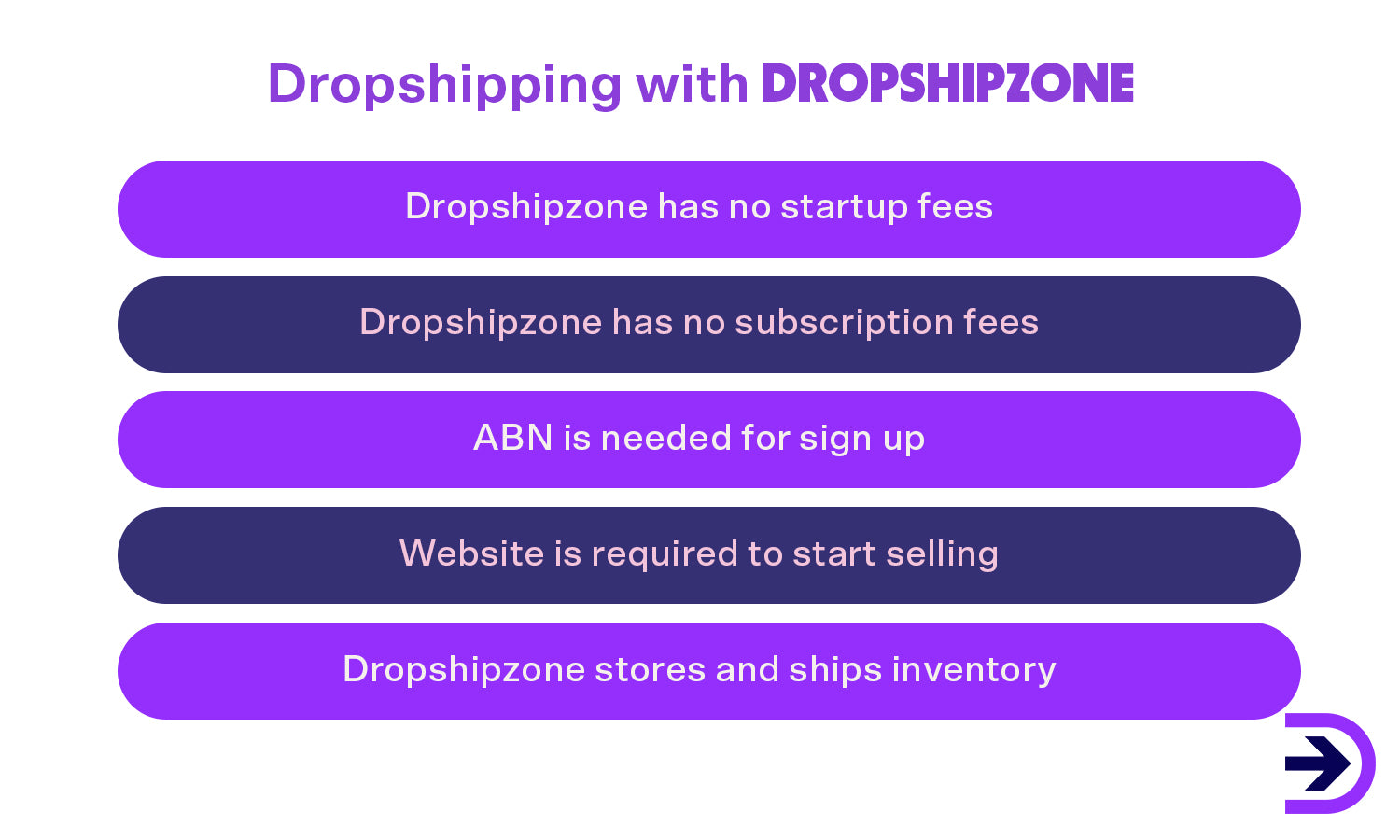
Dropshipzone has no startup fees and has partnered with various Australian suppliers so you can eliminate some of the steps used in traditional retail supply chains to reduce costs and create an efficient shipping process.
Sign up with Dropshipzone today and find suppliers to help you with inventory management so you can focus on things like maintaining marketing channels to ensure the success of your ecommerce business.




